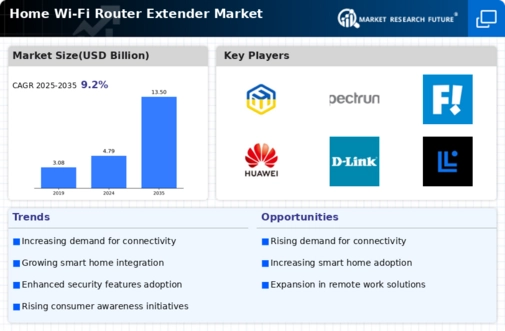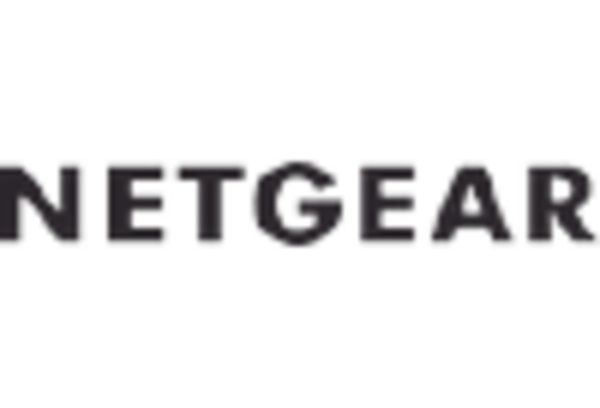Rising Internet Usage
The surge in internet usage across households is a primary driver for the Home Wi-Fi Router Extender Market. As more devices connect to the internet, the demand for reliable and extensive coverage increases. Recent data indicates that the average household now connects over 10 devices simultaneously, necessitating robust Wi-Fi solutions. This trend is particularly pronounced in urban areas, where high-density living often leads to connectivity challenges. Consequently, consumers are increasingly turning to Wi-Fi extenders to enhance their network performance. The Home Wi-Fi Router Extender Market is thus positioned to benefit from this growing need for seamless connectivity, as users seek to eliminate dead zones and ensure consistent internet access throughout their homes.
Remote Work and Learning
The shift towards remote work and online learning has significantly impacted the Home Wi-Fi Router Extender Market. With a substantial portion of the workforce and students operating from home, the demand for stable and high-speed internet connections has intensified. Reports suggest that nearly 30% of employees are now working remotely, leading to increased reliance on home networks. This trend has prompted consumers to invest in Wi-Fi extenders to ensure that their internet service can support multiple users and devices simultaneously. As remote work and learning continue to be prevalent, the Home Wi-Fi Router Extender Market is likely to see sustained growth driven by the need for enhanced connectivity solutions.
Technological Advancements
Technological advancements in networking equipment are propelling the Home Wi-Fi Router Extender Market forward. Innovations such as mesh networking technology and dual-band extenders are enhancing the performance and efficiency of home networks. These advancements allow for better coverage and faster speeds, addressing the growing consumer demand for high-quality internet experiences. Market data indicates that the adoption of mesh systems is on the rise, with many consumers opting for these solutions to eliminate connectivity issues. As technology continues to evolve, the Home Wi-Fi Router Extender Market is expected to expand, driven by the introduction of new features and improved performance capabilities.
Increased Smart Home Adoption
The growing adoption of smart home devices is a significant driver for the Home Wi-Fi Router Extender Market. As households integrate more smart devices, such as security cameras, smart speakers, and home automation systems, the demand for reliable Wi-Fi coverage becomes critical. Data shows that the average household now contains several smart devices, which require stable internet connections to function effectively. This trend is likely to continue, as consumers increasingly seek to enhance their living environments with technology. Consequently, the Home Wi-Fi Router Extender Market stands to benefit from this shift, as consumers look for solutions to ensure their smart devices operate seamlessly throughout their homes.
Consumer Awareness and Education
Consumer awareness regarding the importance of robust home networking solutions is driving growth in the Home Wi-Fi Router Extender Market. As individuals become more informed about the benefits of Wi-Fi extenders, they are more likely to invest in these products to enhance their internet experience. Educational campaigns and marketing efforts by manufacturers have played a crucial role in highlighting the advantages of using extenders, such as improved coverage and reduced latency. This increased awareness is reflected in market trends, where sales of Wi-Fi extenders have seen a notable uptick. As consumers continue to prioritize connectivity, the Home Wi-Fi Router Extender Market is poised for further expansion.


















Leave a Comment